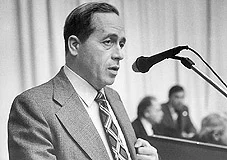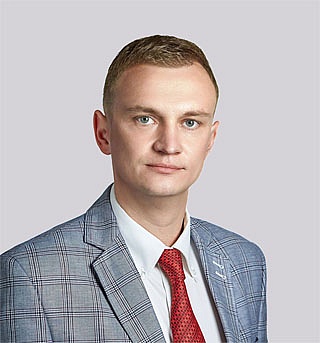Complex protection of IP rights to plant varieties in Russia and Ukraine
18 April 2020One of the main challenges created by a rising global population is maintaining food security. This might be supported by increasing crops. Many researchers believe that we need to double global crop production by 2050. Despite the active development of recombinant DNA technology and recent success in genome editing technology, conventional breeding and selection still plays an important role in the agriculture sector, since keeping genetic diversity is crucial for adapting plants and animals to constantly-changing environments. Creation of a new plant variety requires a lot of time and money as well as considerable knowledge and effort; the selection to be aimed at breeding or discovering and developing a variety with the desirable features.
Russia and Ukraine are both well-known for their growing tradition and rich natural resources. According to the State Statistic Services of the countries, the planted area of agricultural crops under the harvest in 2019 is 79559 thsd.ha1 in Russia and 27841.7 thsd.ha2 in Ukraine. Both countries are members of the International Union for the Protection of New Varieties of Plants (UPOV) and provide legal protection for plant varieties to compensate for breeders’ and investors’ expenses. National companies and institutions as well as foreign international companies (e.g. Rijk Zwaan Zaadteelt en Zaadhandel B.V, RAGT 2n, Syngenta Seeds B.V. in Ukraine and BASF, Syngenta AG, Monsanto in Russia) apply for plant breeders rights protection (PBR). Hundreds of applications are filed annually; Russian and Ukrainian State registers each contain more than ten thousand plant varieties of different genera and species (wheat, sunflower, maize, peas, soya, beet, and many others) which met patentability criteria..
Today in Ukraine, there are approx. 10 million ha of arable farmland, most of which is in possession of the state. Recently, Ukrainian president Volodymyr Zelensky initiated changes in the agrarian sector and on 13 November 2019 the Ukrainian parliament approved the first reading of a draft law on land market. In the opinion of the World Bank, the land reform will promote economic growth, improve the living standards of the Ukrainian people, and enhance the agricultural potential of the country. Naturally, the reform will change significantly the agricultural sector, and so issues of protection of intellectual property rights related to plant varieties become extremely important.
The PVR in Ukraine is a subject to the special law of Ukraine “On protection of rights to plant varieties”. Under the Civil Code of the Russian Federation, plant varieties can be protected as selection achievements and the protection can be provided only for species and genera included in the special list approved by the Ministry of Agriculture of the Russian Federation. The legislation of each of the two countries provides for protection of personal non-proprietary intellectual property rights to plant varieties, Proprietary intellectual property rights to plant varieties (attested by a patent), and rights to market the plant variety (equivalent of the register of the plant variety on the National List). The various embodiments of a variety, to which rights may be acquired shall be a clone, line, first-generation hybrid, and population. A variety shall be considered suitable for the acquisition of intellectual property rights when the variety is new, distinct, uniform, and stable (according to the features denoted by a certain genotype or combination of genotypes).
In Russia, the examination for distinctness, uniformity and stability of plant variety is carried out by the institutions authorized by the Commission for Testing and Protection of Selection Achievements (Gossortcommission), and for some species and genera by the breeders (the applicants) on the basis of the national test guidelines. The additional criteria to be checked with respect to plant varieties are their “economic usefulness”, and only those plant varieties which meet this requirement are permitted for use in Russia. Gossortcomission assesses the economic usefulness based either on trials or on expert evaluation depending on species and genera of the plant. The plant varieties possessing economic usefulness are included in a special register - the State Register for Selection Achievements Permitted For Use (National List). This register may include plant varieties that are not protected.
Ukrainian law provides for substantive examination of plant varieties (including DUStesting). If accepted, a substantive examination is carried out based on the application documents and related material (incl. seedlings material provided for substantive examination and further keeping). If necessary, the PVO may accept foreign DUS test reports.
The proper notification of the Ukrainian Institute for Plant Varieties Examination is the due document for the Customs on samples of seedling materials imported to Ukraine for testing. Therefore, the registration of each variety requires planning a strategy in order to provide the seeds or plant materials timely to start growing. It is also important to note that growing stations for substantive examination are located in different regions of Ukraine, namely, on each of tree farmland zones: forest area (Ukr. “Polesye”), forest-steppe, steppe, and results of examination of the same variety may vary significantly.
The Russian and Ukrainian patent systems stipulate that plant varieties and biological methods for obtaining them are unpatentable subject matters. In some cases, patent protection (also known as “plant patents”) will be available for plants as such. In Ukrainian practice, patent protection for plants obtained by essentially biological processes is available in some cases, provided that claims include a nucleotide sequence, an amino acid sequence, and other characteristics necessary for identification by technological means (by genetical/biochemical or other complex methods) and provided that these characteristics are not related to obtained plants belonging to limited groups as cultivated plants within a species, and may extend to the entire species and/or higher taxonomic groups of plants. Usually during examination of such patent applications applicants should file strong arguments in response to preliminary refusals. Some cases are successfully considered at the Board of Appeal after final refusal.
Traditionally, the development of genetic engineering methods has allowed for patent protection of engineered plants as inventions both in Russia and Ukraine, provided that all patentability requirements are fulfilled, and the claims include sufficient sets of technical features for their identification, and the features or traits acquired by the transgenic plant. Some specific issues are also connected with use of plant varieties that were obtained with the use of genetic constructs. Amendments to the Law of Ukraine “On the State Biosafety System for the Creation, Testing, Transportation and Use of Genetically Modified Organisms (GMO)” in case of adoption by the Ukrainian parliament prescribe the creation of an examination body, which will issue the permission for filing of the application of the new genetic construct into the State register. Registration of the construct should further allow obtaining GMO varieties that will enjoy the protection as a plant variety obtained by traditional selection. Currently, the central executive authorities maintain State registers of GMOs available on official websites. In 2016, the growing and production of GMOs was banned on Russian Territory. Currently, the State Register for Selection Achievements Permitted For Use does not include any genetically modified plant varieties, and under the Federal Law of the Russian Federation No. 149- FZ “On seed growing” importing and growing seeds of genetically modified plants is prohibited in Russia (except for examination and scientific research purposes).
Under the legislation of both countries, and to comply with the UPOV Act, the variety shall be designated by a denomination which will be its generic designation. The denomination must enable the variety to be identified and the variety shall be registered anywhere under the same denomination. The variety shall be offered for sale or marketed exclusively under the granted denomination, even after the expiration of the breeder's right in that variety. In that case it is permitted to associate a trademark, trade name, or other similar indication with a registered variety denomination, but the denomination must nevertheless be easily recognizable. The rules for the denomination in both jurisdictions correspond to article 13 of the UPOV Convention. Under the Russian practice, the fact of registration of a new plant variety and entry of its name in the State Registers does not lead to acquisition of exclusive rights for the denomination, but prevents registration of the identical or similar name as a trademark in respect of the similar goods or services by the third parties.
Intellectual property objects such as patents, plant varieties' patent, and trademarks may be included in the Ukrainian Customs Register in order to control the importation or exportation of goods. The Russian legislation makes no provision for the possibility of including patents or plant varieties into the Russian Customs Register but allows trademarks to be included in the Register.
Significant reform of Ukrainian legislation on land market creation declared by the Ukrainian president, harmonization of Ukrainian law with the law of European Union which was started after adoption of the Association Agreement between the Ukraine and the European Union, and the future establishment of a High Court on Intellectual property, all open a new page in the protection of intellectual property rights related to agricultural production in Ukraine. International sanctions against Russia have led to a significant drop of inflow of foreign investments in the agricultural sector; however, one must admit Russia’s potential in organic farming. We cannot discount the existing possibility of expansion of the cultivated land area using some of the idle land on the Russian territory. Many national and foreign companies have already protected their rights in Russia and Ukraine. Complex protection of intellectual property rights to plants with use of all the above-mentioned mechanisms is a very powerful instrument for doing and developing agricultural business in both countries.
- Cereals and leguminous crops occupied 46.8 million ha, including 28.1 million ha of wheat: winter - 15.8 million ha, spring - 12, 3 million ha. Planted area for barley was 8.8 million ha, corn - 2.6 million ha, rye - 872 thsd.ha, rice - 194 thsd.ha, and oats - 2.6 million ha.
- Planted area for cereal and leguminous crops (winter/spring wheat, winter/spring barley, maize for grain, peas, oat, etc.) is 15279.4 thsd.ha, for industrial crops (sunflower seeds, soya beans, winter rapeseed and colza, sugar beet, mustard seeds etc.) is 9026.0 thsd.ha, for roots and tubers, vegetables and food melons (potatoes, tomatoes, watermelons, pumpkins, carrot, beet, cabbage, cucumbers and gherkins) is 1820.6 thsd.ha, for fodder crops is 1715,7 thsd.ha.
Для использования сайта Вы принимаете условия нашего Пользовательского соглашения.










